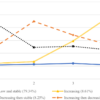During pregnancy, women are more susceptible to severe respiratory infections from multiple viruses, including influenza A virus (IAV), respiratory syncytial virus (RSV) and severe acute respiratory syndrome coronavirus (SARS-CoV-2). Additionally, pregnant women are disproportionately affected by influenza, resulting in a more than 10-fold increase in hospitalization risk.
A new study led by Dr. Natalie Johnson, associate professor in the Texas A&M University School of Public Health’s Department of Environmental and Occupational Health, shows that exposure to ultrafine particles (UFPs) during pregnancy enhances respiratory viral infection risk. The results of the study were published recently in Particle and Fibre Toxicology.
“We know that air pollution affects the pulmonary immune system, making individuals more susceptible to viral infections,” Johnson said. “We also know pregnant women are already at increased risk for severe flu. Surprisingly, studies have not interrogated the combined effects of pregnancy, air pollution and influenza. Our findings demonstrate the need to further study these interactions in order to prevent short and perhaps long-term impacts on maternal health.”
In the study, Johnson and her co-authors point out that there are several physiological characteristics that explain maternal susceptibility to viral infection. Among those are increased cardiac output and decreased tidal volume—the amount of air that moves in or out of the lungs with each respiratory cycle—as well as immunological changes such as selective modulation of immune cell subsets to protect the developing fetus.
The research team also highlights that vaccination compliance during pregnancy is generally below 50 percent, despite vaccination against influenza being safe and effective, leading to increased risk for developing respiratory infection.
As a result, air pollution, which is a worldwide environmental health issue, is responsible for one in nine deaths with an annual premature mortality of more than 7 million. A mixture of gases and tiny airborne particulate matter, which is categorized as UFPs, are critical to recognize and identify, especially to protect vulnerable populations.
The research team says these findings support future clinical and regulatory interventions for protecting pregnant women and controlling UFPs. According to the researchers, it is imperative that pregnant women in urban cities, where influenza and UFPs are more prevalent, are provided vaccinations and preventive measures limiting UFP exposure to protect maternal health.
“Air pollution is a pervasive environmental health issue,” Johnson said. “Strategies to protect the most vulnerable, like pregnant women, are of high priority to decrease adverse health effects.”
More information:
Nicholas L. Drury et al, Maternal exposure to ultrafine particles enhances influenza infection during pregnancy, Particle and Fibre Toxicology (2023). DOI: 10.1186/s12989-023-00521-1
Provided by
Texas A&M University
Citation:
Exposure to air pollution during pregnancy increases risk for flu (2023, April 20)



